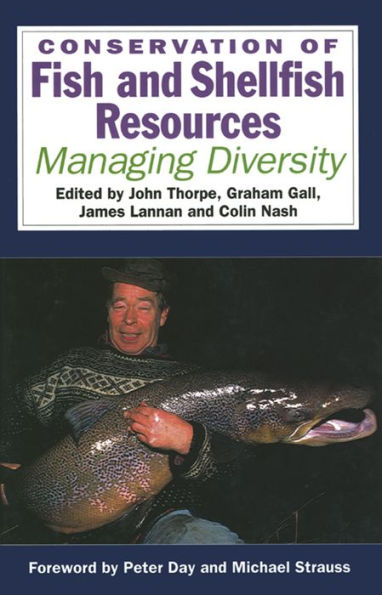Conservation of Fish and Shellfish Resources: Managing Diversity
Fish and shellfish comprise annually nearly 70-million tons of the world's edible animal protein. However, because of this demand, previously vast stocks have often been exhausted to the point of near extinction. The first book of its kind in the area of freshwater/marine biodiversity, this extensive work reviews the present status of genetic resource management, its needs and constraints, various intervening human factors such as pollution and overfishing, and problems posed by different species and life-styles. This discussion of the conservation of fish and shellfish resources is illustrated by four diverse groups: Atlantic salmon, cupped oysters, common and Chinese carp, and Nile tilapia. These results, produced by the collaboration of nine leading population and production geneticists, aquaculturists, and behavioral and developmental ecologists should become a fundamental resource useful to biologists, scientists and advisors exploring current issues in the fishery sciences. - Four page color plate section - Database of key organizations for contact purposes - Foreword by Dr. Mike Strauss, Am. Assoc. for the Advancement of Science; and Dr. Peter Day, Rutgers University - Four in-depth case studies by international experts - Editors are major names in marine/freshwater fisheries science - Originally sponsored and reviewed by U.S. National Academy of Sciences
1111448145
Conservation of Fish and Shellfish Resources: Managing Diversity
Fish and shellfish comprise annually nearly 70-million tons of the world's edible animal protein. However, because of this demand, previously vast stocks have often been exhausted to the point of near extinction. The first book of its kind in the area of freshwater/marine biodiversity, this extensive work reviews the present status of genetic resource management, its needs and constraints, various intervening human factors such as pollution and overfishing, and problems posed by different species and life-styles. This discussion of the conservation of fish and shellfish resources is illustrated by four diverse groups: Atlantic salmon, cupped oysters, common and Chinese carp, and Nile tilapia. These results, produced by the collaboration of nine leading population and production geneticists, aquaculturists, and behavioral and developmental ecologists should become a fundamental resource useful to biologists, scientists and advisors exploring current issues in the fishery sciences. - Four page color plate section - Database of key organizations for contact purposes - Foreword by Dr. Mike Strauss, Am. Assoc. for the Advancement of Science; and Dr. Peter Day, Rutgers University - Four in-depth case studies by international experts - Editors are major names in marine/freshwater fisheries science - Originally sponsored and reviewed by U.S. National Academy of Sciences
72.95
In Stock
5
1

Conservation of Fish and Shellfish Resources: Managing Diversity
206
Conservation of Fish and Shellfish Resources: Managing Diversity
206
72.95
In Stock

Product Details
| ISBN-13: | 9780080529813 |
|---|---|
| Publisher: | Elsevier Science & Technology Books |
| Publication date: | 06/20/1995 |
| Sold by: | Barnes & Noble |
| Format: | eBook |
| Pages: | 206 |
| File size: | 5 MB |
From the B&N Reads Blog
